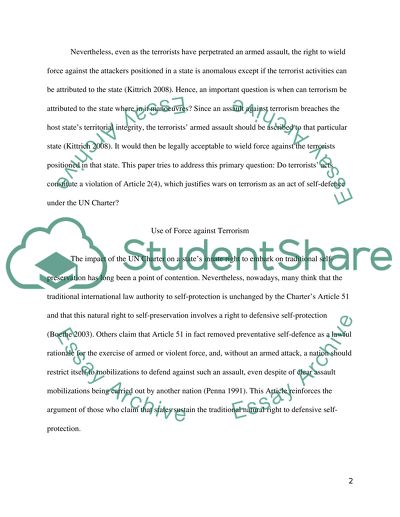The Use of Force and Wars on Terrorism Essay Example | Topics and Well Written Essays - 1000 words. Retrieved from https://studentshare.org/law/1431711-question-the-use-of-force-and-wars-on-terrorism
The Use of Force and Wars on Terrorism Essay Example | Topics and Well Written Essays - 1000 Words. https://studentshare.org/law/1431711-question-the-use-of-force-and-wars-on-terrorism.


